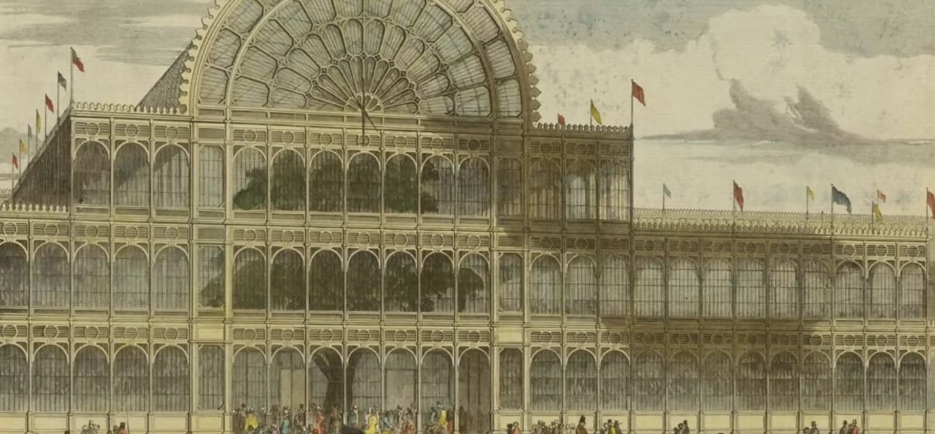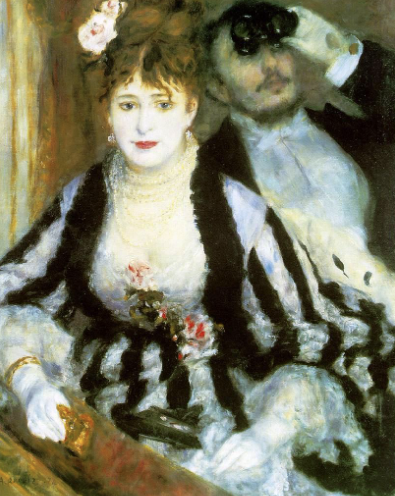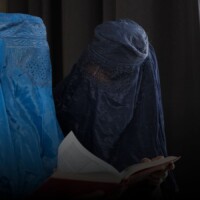“The biggest artistic events in the world are called biennales, hosting the world’s most important artists to address the most important things in the world through their art. For us, the most important artists in the world now are the artists of Gaza”.
These are the unwieldy words of co-founder of the Gaza Biennale, Tasneem Shatat. The initiative was founded in April 2024 as a collective project to draw attention to Palestinian plight. Work from fifty artists is planned for an exhibition on the Gaza strip and in galleries across the world, dependent on which institutions are willing to collaborate and host. In other words, art will be mobilized for political purposes.

The reasoning of Shatat and her collective for adopting the form of a biennale is to convey the perceived importance of their cause. Biennials refer to large international exhibitions usually held every two years. In contrast to the commercial interests of art fairs, biennials serve as cultural grounds to exchange ideas on the international stage. The Great Exhibition of 1851 at Crystal Palace, London was integral to the emergence of these events in their modern form. Co-founder of the Great Exhibition, Henry Cole (1808-82), was inspired by the national fairs that he had witnessed in Paris. These had emerged from the state fetes of the French Revolution, which presented the utopian ideals and goals of a new society, in the guise of Romantic nationalism.

Cole, with the support of Prince Albert, re-envisioned the fair as an international extravaganza. Set in a 563 by 138 meters space, Great Britain and its colonies occupied half of the exhibition, with the other half displaying goods from the rest of the world. The fair was a fantastical display of soft power, set in an epic glass and iron structure to demonstrate Britain’s imperial might.
The Great Exhibition attracted around six million visitors during its six-month lifespan. This is especially impressive given that the Venice Biennale sold 700,000 tickets in 2024 across the same time span. The decision by the co-founders of the Gaza Biennale to use the term “biennale” had political purpose. Affiliate of the Al Risan Art Museum, and supporter of the Biennale, Andre Ibrahim, recalls early debates in the planning stages: “Calling it a ‘biennale’ during the early planning phase was the best way to describe what we were trying to undertake collectively. The term was debated for a bit and it sort of stuck. It has evolved from there into a real biennale with more than 50 artists.”
Enjoy independent, ad-free journalism - delivered to your inbox each week
Biennales are clear opportunities to exercise geopolitical power on an international stage. Annabelle Pollen makes this argument in her recent history of the British Council Collection. The British Council, for example, contributed a pavilion to New York’s World Fair in 1939. Underpinning this decision included the motivation to “build alliance with the United States in the case of war”. Not only through alliances, but biennales also constitute opportunities to display artworks that contain political messages. This is apparent in the British Pavilion for the Venice Biennale since 1938. In the Cold War context, the British Council foregrounded the work of Henry Moore for its implicit humanist messages. In the catalogue for the 1948 exhibit, Hebert Read describes how his sculpture comprises an “element of art that transcends all periods and schools”.
More recently, politics have been foregrounded at the Venice Biennale, with Russia absent from the show for the past two years, whilst Ukraine participated for the first time in a decade. The situation is similar at notable art fairs. The gallery Experimenter was given the prime spot at Frieze art fair last year to stage an exhibition that addressed “‘the police brutality, censorship and criminalising of anti-genocide voices’ in Germany over the past ten months stemming from the Israel-Hamas war”. To stage this exhibition, Experimenter worked closely with artistic director for Frieze London, Eva Langret. Their collaboration shows how political alignment was exercised through soft, cultural, power.
Engagement with the political messages for biennales and art fairs largely depends on in-person encounter. Visitors to Frieze had to physically walk past the Experimenter stand as they entered the fair, making it practically unavoidable. Organizers of the Gaza Biennale recognize the barriers posed by the fact of their planned exhibition being on the war-torn and inaccessible Strip, quite different to the glamour of Venice and London. They plan to circumnavigate this barrier through institutional collaboration. The homepage for the planned Biennale states that it:
extends an open invitation to local and international institutions to host and produce these exhibitions and to work with us as partners. We offer a unique opportunity to art institutions to exhibit invaluable works that reflect the need for creativity in the darkest of times.
Institutional collaboration is imperative for the co-founders of the Gaza Biennale because without alternative host locations their messages will fall flat.
Biennales rely on in-person encounters due to the physical necessities of experiencing visual art. Despite the digital age, people continue to flock to in-person events, and the very act of being present and witnessing the art thus contributes value and provenance to the art. Biennales or international fairs developed in a period when observation was foregrounded as a central artistic interrogation. La Loge (1934) by Pierre-Auguste Renoir (1841-1919) spotlights the voyeur as its principal interest. The man in the background looks through binoculars at a direction that seems unlikely to be the stage, given its angle relative to the curvature of the balcony. Perhaps, and likely so, he is spying on a fellow operagoer. His placement makes us aware of our own voyeuristic position, as we gaze upon the woman in the foreground. Renoir, along with other Impressionists such as Edouard Manet (1832-83) and Gustave Caillebotte (1848-94), portrayed how the act of observing – encapsulated by Charles Baudelaire’s flâneur (1863) – and by extension, being visible, was part of the modern condition. The proliferation of social media is an obvious extension of this phenomenon.
Despite the digital age, people continue to flock to in-person events, and the very act of being present and witnessing the art thus contributes value and provenance to the art.

Observing was the means to oppress according to Michel Foucault (1926-84). In Discipline and Punish: The Birth of the Prison (1975), he discusses Jeremy Bentham’s Panopticon – an architectural structure designed so that every prison cell can be observed from a central position. Visibility is a trap because surveillance necessitates prisoners to undergo continuous self-regulation. Tony Bennett’s The Birth of the Museum (1995) applies Foucauldian theory to a museum setting. These are places to see and be seen, and provide opportunities for the governmental regulation of behaviour.
Biennales – akin to art fairs – provide opportunities to represent and observe others. Bennett, in “The Exhibitionary Complex”, argues that the Great Exhibition of 1851 constructed a new pedagogic relationship between the State and its public. Contained within the enormous glass structure of Crystal Palace, visitors became a subdued crowd under the direction and all-seeing eye of the State.In these modern observatory formats, participation and non-participation signify political alignment. In other words, exhibitions and artworks constitute litmus tests for political opinion.
For the organizers of the Gaza Biennale, institutional capture and collaboration therefore work on two levels. Firstly, it is imperative so that the artworks may be seen; and secondly, the decision to collaborate, or not, is a political test made public. The importance of the latter is clear in the homepage description, which asks “Can the art world turn its attention to the reality of Gaza today? Should Gaza’s artists create art under the weight of genocide? Will the art world honor this work rather than exploit it?”
However, institutional capture may be more difficult that the founders originally envisaged. Weaving exclamations of support into art institutions have stoked problems in the past. In February 2022, Alistair Hudson, the director of the Whitworth Museum in Manchester, UK was forced to leave his position after he approved a show by Forensic Architecture that included a statement in support of Palestine. The statement read: “Forensic Architecture stands with Palestine. While working on this exhibition we witnessed with horror yet another attack by Israel’s occupation forces on Palestinians.” U.K. Lawyers for Israel complained about the exhibition to the governing body of the Whitworth Gallery, highlighting their potential breach of public sector equality duties in light of Manchester’s Jewish population. Hudson left The Whitworth shortly afterwards.
The art media – despite expressing almost blanket support for Hudson – conflicted with institutional protections put in place to ensure that public galleries fulfil their public responsibilities. The pattern is emerging once again. The art press – and, unsurprisingly, The Guardian – have already started to pay attention to the Gaza Biennale as a serious endeavor. The Art Newspaper published the article “Gaza Biennale seeks to provide support and relief for Palestinian artists” on 12 December 2024, and Artnet included their article about the Gaza Biennale as part of their wider end-of-year column, “We Hit Publish on Thousands of Stories in 2024. Here Are Some of Our Favourites”.
Some would argue that this is just a flash in the pan. Grassroots activists trying to stoke a cause without the fuel to make a fire worthy enough to extinguish. The extent to which institutions align – as per the Whitworth example – will reveal whether and which institutions still function as “public” bodies. What is clear, however, is that the Biennale is not about art. Instead, it seeks to appropriate the potential of Biennales for geo-political power mongering. “These stories reminded us why art still matters”, the subtitle for Artnet’s summary column reads – a sentiment that seems completely misaligned with the focus of the Biennale itself.
Politics, not art.
What is clear, however, is that the Biennale is not about art. Instead, it seeks to appropriate the potential of Biennales for geo-political power mongering.




Comments (0)
Only supporting or founding members can comment on our articles.